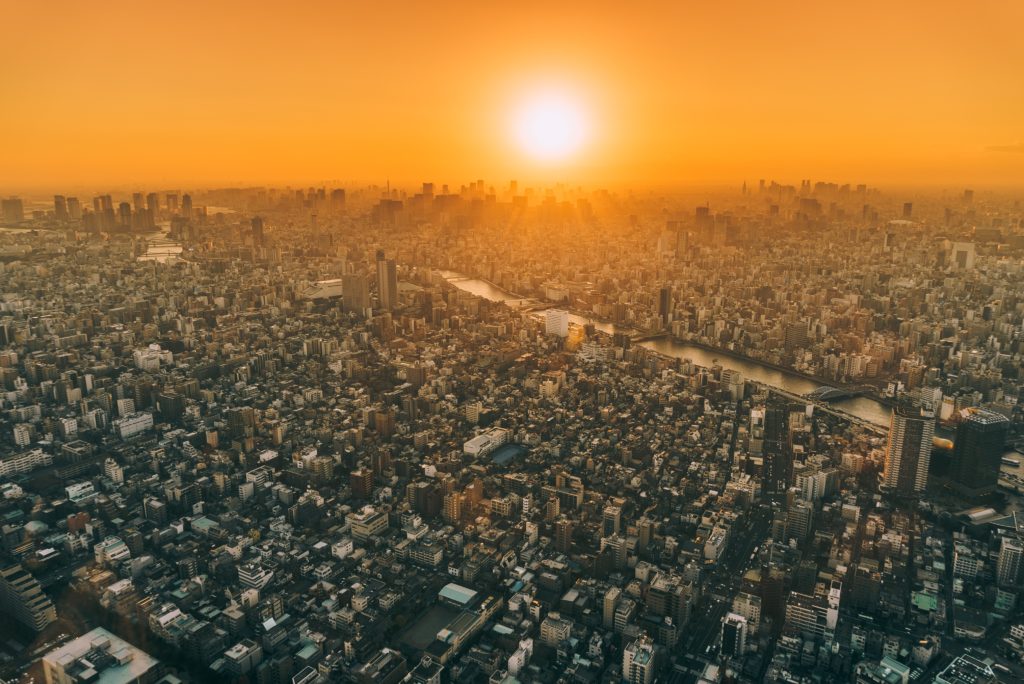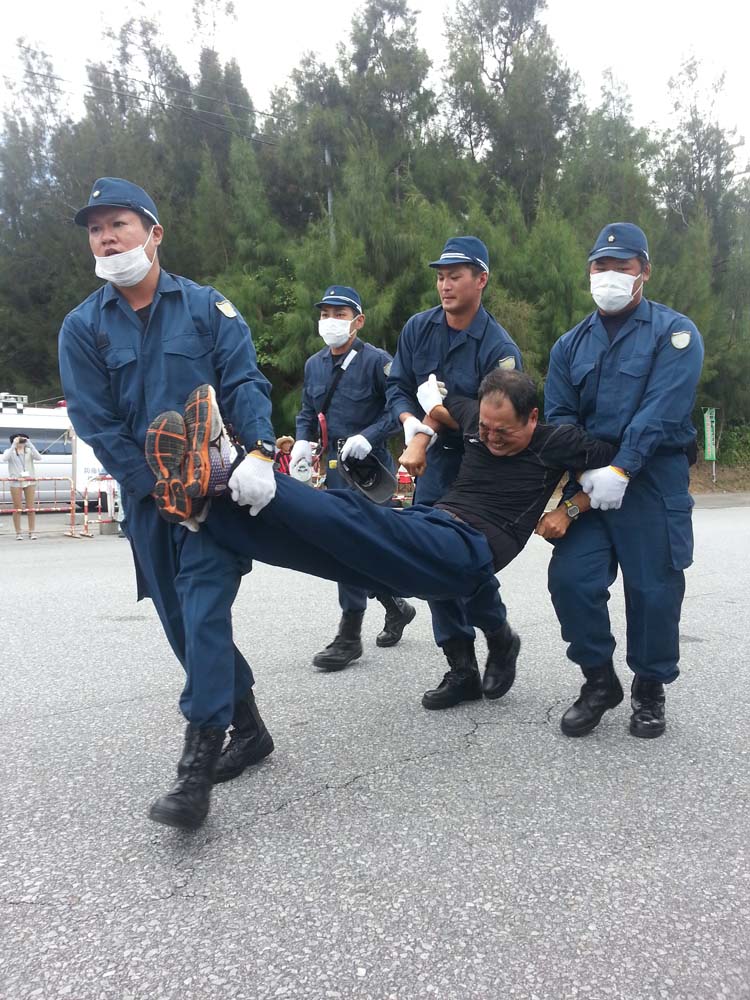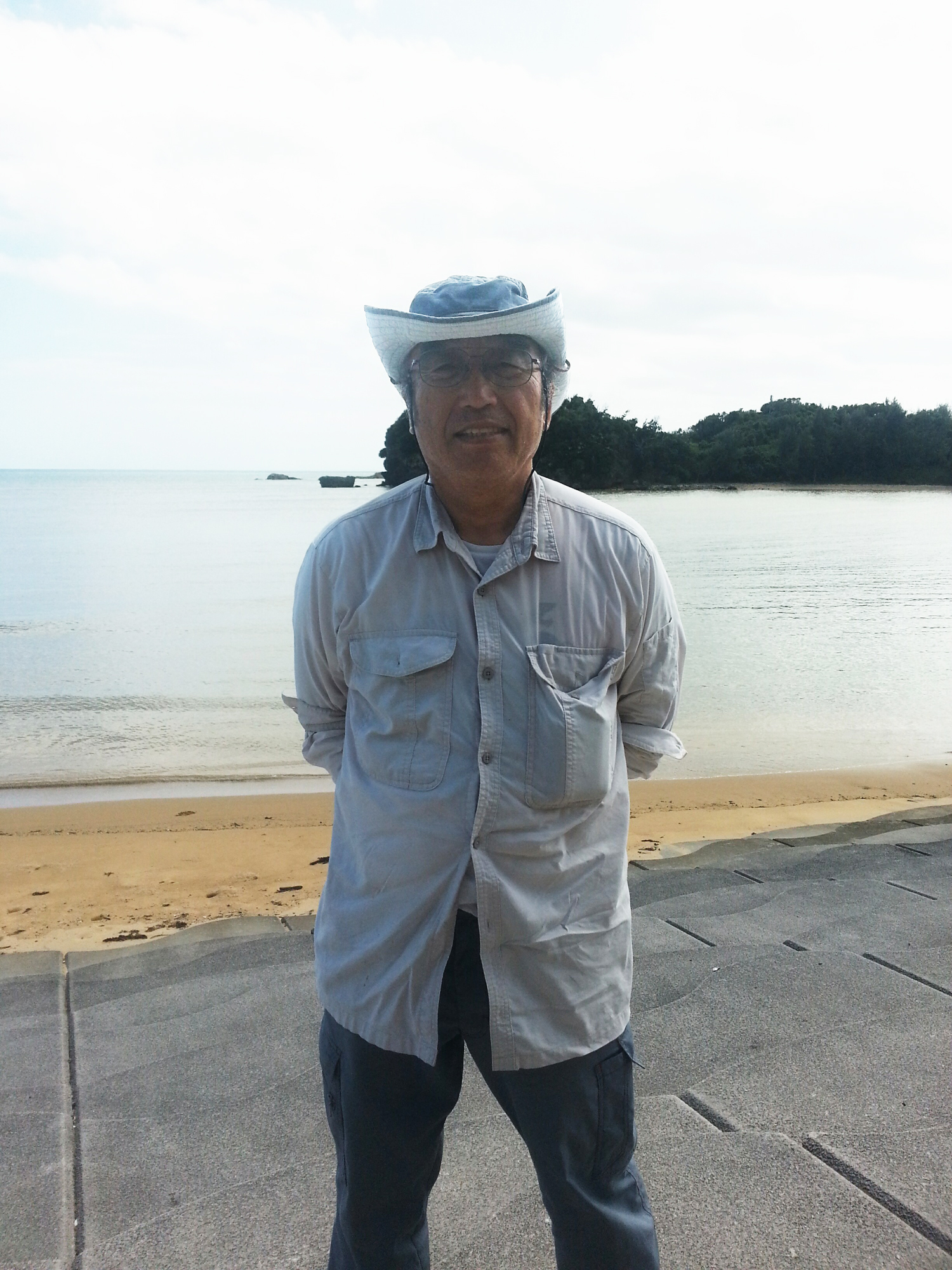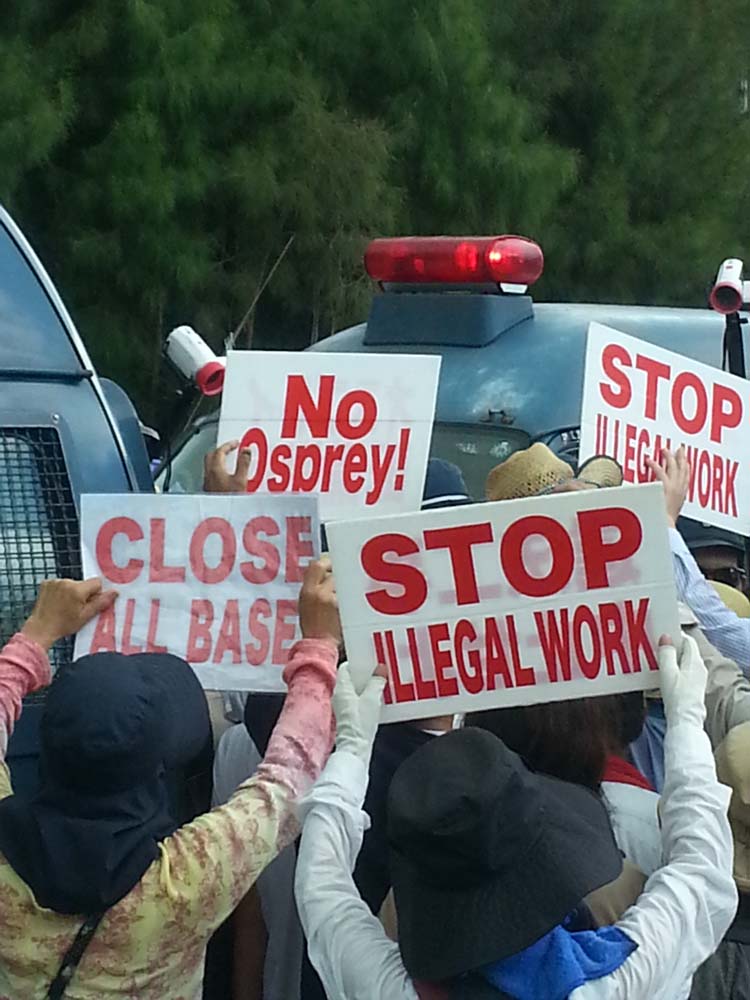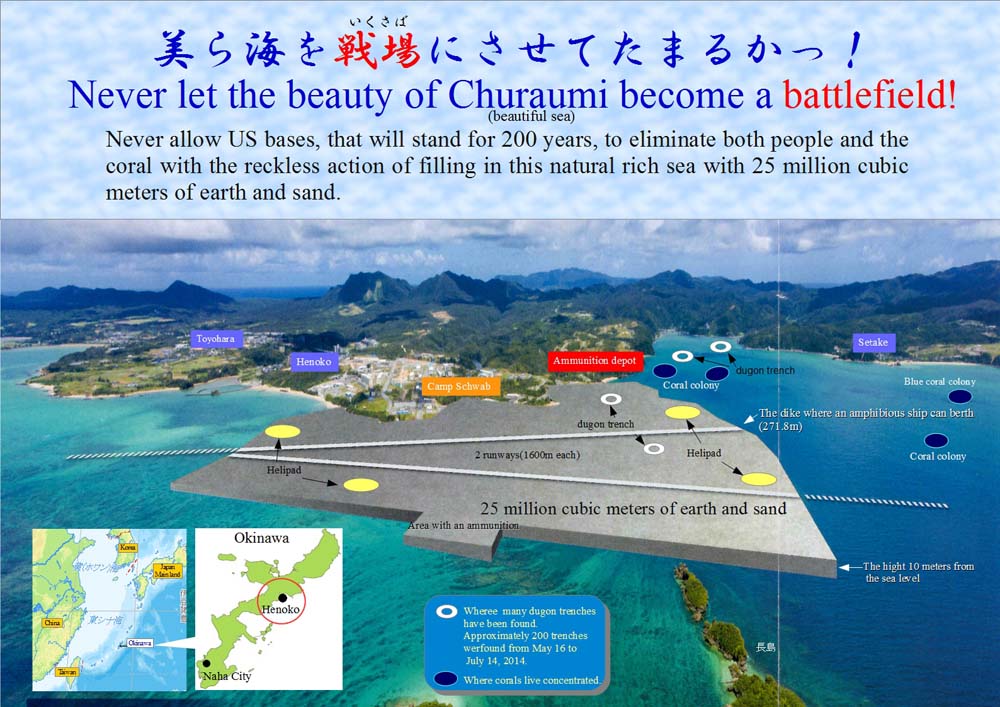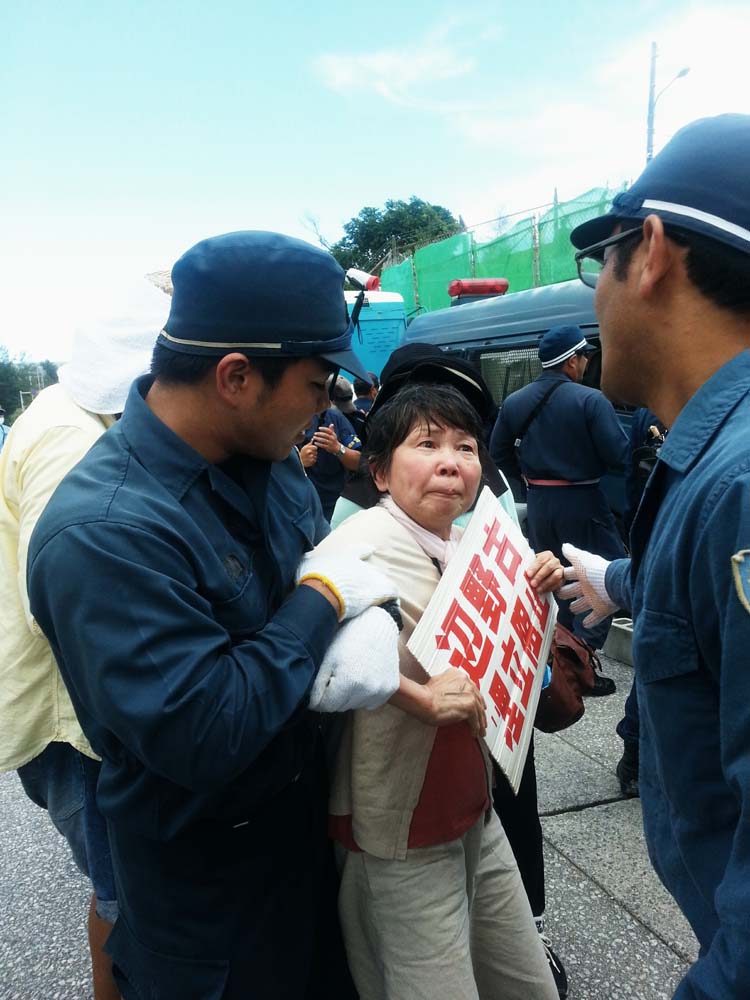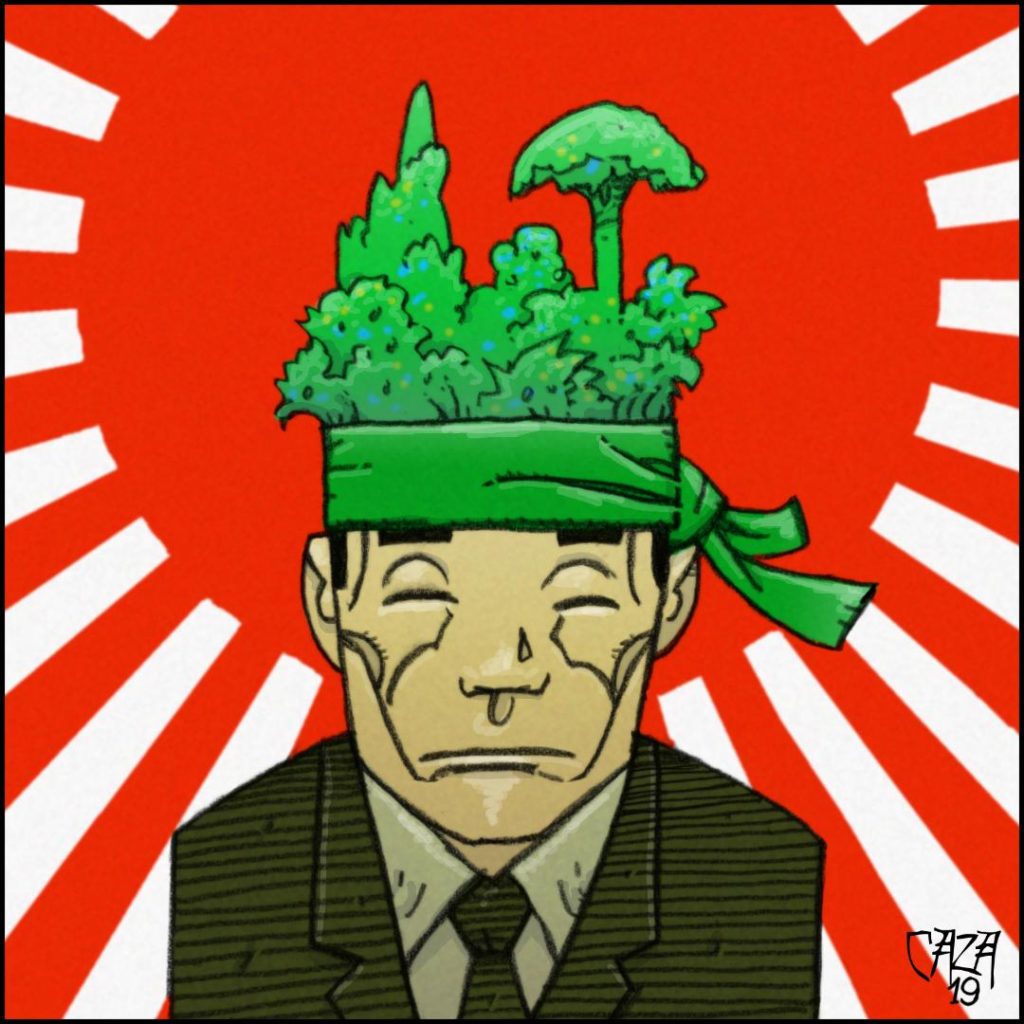
Philippe Caza, Hayashi-san’s Green Headband, 2019
by Yann Quero
Never for a moment would anyone have believed that Mr. Hayashi would become the most important person in the world, much less himself.
Mr. Hayashi, or Hayashi-san as one says in Japan, was ordinary in the extreme; average height, a barely expressive face, and dressed in an indistinguishable gray suit. Aged 37 years with a slightly stooped demeanor, he eked out an anonymous existence between an apartment in the distant Tokyo suburb of Machida and the headquarters of Yatohido Company. It was there that he was employed in the obscure but respectable profession of assistant accountant. His aged parents had retired several years earlier to their home prefecture of Kochi, far to the South leaving him alone in a capital city little friendly to young adults.
Nothing in the daily life of Hayashi-san would resonate with the ancient significance of his name meaning “forest”. On the contrary, he was dominated by the artificiality of this megacity of 26 million people which, in moments of reflection, makes one ponder at what point we are still actually human beings. The daily life of Hayashi-san had been upset several weeks prior by the arrival in his department of a trainee secretary, Miss Mariko – Mariko-san. Her smiles linked with the etymology of her traditional first name – “child of true reason” – were like a taste of sake to his parched throat reaching to his heart, even though he barely entertained the slightest possibility that she had actually noticed him with his middling status alongside the hundreds that made up the Yatohido social scene. Rumors circulating about her also suggested prudence, as the young woman was identified as a union type.
Proof of the matter came on one chilly day of 13 February.
Under a drizzle not quite rain, Mariko-san proudly appeared at the revolving door of the main entrance to the company headquarters, flanked by half a dozen strapping sumo wrestler types. A banner held above her head accused Yatohido Company of implication in illicit disposal of extremely toxic waste and called for a strike. Like all conscientious accountants, Hayashi-san was hardly implicated in the activities of his company. That is how the world is. The newspapers overflowed with evidence of increasingly serious environmental violations on the part of the company. He was not especially proud of it. However, his deeply-ingrained habits of meticulous labor rendered even the idea of protest virtually sacrilege.
Several employees had proceeded to the entrance, most of them indifferent to the troublemakers. Only a few donned head bands.
Strikes in the ex-empire of the rising sun differ significantly from those in the West.
For non-Japanese readers, it should be clarified that strikes in the ex-empire of the rising sun differ significantly from those in the West. Whereas Westerners gesticulate with vehemence, noisily yelling slogans and demonstrate outside of their workplace, the Japanese prefer to protest silently by wearing a white band tied around their head, before going to work, as a kind of symbolic protest. Sensitive to the code of honor as much as to the lure of gain, the Japanese bosses are generally resigned to grant concessions rather than see their employees express their discontent overtly in front of them, with the help of a cotton cloth of immaculate whiteness.
Hayashi-san had no will to participate in this demonstration. Yet, even when Miss Mariko turned her eyes upon him, he dared not look back at her. Even so, he committed the folly of turning his head towards her. Although petrified by the audacity of his act, Hayashi-san could not at the same time repress a frisson of wonderment at breathing the scent of jasmine exuded from the bodice of the young woman as she tied a cloth around the back of his head.
Despite this breach of the ordinary, the day began with metronomic regularity, reading departmental notes, checking bills, credits and debit accounts, all the little games that accountants play. At a quarter past eleven, as with all his colleagues, he placed a telephone order for a bento which was delivered at five minutes to twelve, with its heavy smell of perfumed rice and fried mackerel. Expertly wielding chopsticks, he carefully devoured the contents under the cover of a computer screen. It was at this moment he became aware that people were staring at him. The parade of company officials with scowling faces had not escaped him. It is true that very few of the accounting staff had participated in the strike action, but two tables further down, the grumpy Kazuki showed his opposition by wearing a white head band, without attracting the kind of sustained attention as himself. Even more surprisingly, Mr. Kosumi, the head of finance, entered the room in person with a mini-radio attached to his ear. The volume was sufficiently strong to indicate to Hayashi that the events associated with the strike now rippled through the company. The finance chief fixed upon him with an insistent stare before stifling a groan and turning on his heels.
In this atmosphere of general nervousness, Hayashi attributed the attention of which he was victim to the distinctive smell of the fish which he had just eaten. Struck with a certain shame, he disposed of the empty lunchbox in the bin near the elevator and not inside the office as usual. But the odor followed him for the rest of the day, at least he believed so given the searching eyes of those who observed in silence.
So many souls are prisoners of their illusions of success on which they have been lulled.
Hayashi-san’s stupefaction reached a height at the point when he exited the office at 6 PM. In order to economize on power, as is want in Japan, employees were no longer required to stay on in their offices until after dark. He really did not complain even if he sometimes wished to be able to finish off working on certain delicate documents.
His stupor was driven into fear at having nothing rational when he noticed a group of journalists entering through the revolving doors. It seemed unlikely but they appeared to be personally awaiting him. Some of them knew his name and interrogated him on the meaning of his actions.
Deeply embarrassed, poor Hayashi-san stammered out vague contrite explications on the legality of the strike process notwithstanding of its potential damage to national production. In the wake of these maladroit verbal pirouettes, and profiting from the crowd and the gathering darkness, Hayashi-san made his escape. However, the looks he received in the metro and then on the Odakyu-Odawara line appeared to him no less inquisitive and suspicious than those of his colleagues and the reporters. Attributing this sentiment to work stress, Hayashi plunged into reading the Nihon Keizai Shimbun to check up on the stock exchange where he had placed his meager savings.
First observing the scorn in the eyes of his landlady, Hayashi-san then discovered the terrible truth in the image he saw reflected in the mirror of his minuscule bathroom. In his troubles he had forgotten to take off his headband upon leaving work. But the gravity of that forgetfulness was hardly equal to the surprise of discovering that the headband was actually green in color, not white …
That evening, switching from TV Asahi to Fuji Television and to Nippon News, he gained some understanding although not of the full depth of the disaster. His “statement” had become newsworthy. All the commentators questioned this novel mode of protest vesting the strike with a profoundly new forceful claim. Wearing the colour green had not escaped anyone, yet a great ambiguity surrounded it.
Many foresaw an environmental action, which made good sense in the light of toxic waste cases including Yatohido Company’s. Others forecast that it could be a protest against the excesses of Japanese acculturation. In reality, in old Japanese there is no term to describe this colour. Since olden times the term ao signified “blue” as well as referring to “green.” Other analysts passed comment that green is equally the colour of Islam. The fact that Hayashi-san had worn the green headband outside of his workplace was perceived as an act to draw attention to the fact that the world could no longer live in peace until the great questions dealing with Islam were resolved, commencing with the Palestine problem, otherwise threatening Japan’s petroleum supplies.
Wearing the color green had not escaped anyone, yet a great ambiguity surrounded it.
Hayashi-san preferred to sleep rather than listening to these rambling discussions. He could not be prevented, however, from asking himself why Mariko-san had given him a green headband, when all his fellow strikers were provided with classic white headbands. Was it just an accident? A mistake? Or, was she playing a joke on him? Or perhaps was she helping a colleague to takeover his position?
Hayashi-san’s night was interrupted by interminable periods of insomnia and horrible nightmares devoid of sense, even if some of them led to proximity with Mariko whom he would not have needlessly displeased.
On the morning of 14 February, Hayashi-san put away the headband and sought to forget this painful episode. That was impossible. All the passengers on the Odakyu Odawara line and, in turn, the metro appeared to scrutinize him with insistence. Without doubt it was an illusion of his fatigued brain. Still, he could not help but note that several Tokyoites were wearing green headbands.
A crowd of journalists, cameramen, and onlookers hurried in front of the Yatohido Company quarters. Even though the crowd was too dense for him to discern whether the strikers were still there, Hayashi-san did not imagine for a second that this was on account of himself. Nevertheless, as a precaution he furnished himself with an anti-pollution cotton protection mask covering his mouth and nose, to which he had added a gray scarf and wide-brimmed hat. Incognito, he flowed with the crowd of company employees and managed to pass through the media barrage without being noticed. Watchmen awaited in the interior of the building. Apprehended, he was led to face the shacho or company president.
Never in his wildest dreams had Hayashi envisaged to meet Yatohido in person. At least a dozen echelons above him were ranged, commencing with the certified accountant, then the inspector, then the deputy chief of service, the chief, and right up to the head of finance who alone could be expected to talk to the great patron. The interview was of murderous brevity. Yatohido did not even address a word to him. He merely turned a scornful glance – more contemptuous than angry – allowing a junior executive to explain that his deportment was totally unacceptable for a respectable company. They didn’t even ask him to explain himself. He was dismissed without any other form of process and enjoined to leave by the side door, so as not to add a new scandal to the actual dishonorable confusion.
His return trip was interminable. With eyes lowered upon his carefully polished shoes, Hayashi was certain that, in spite of his anti-pollution mask and hat, everyone was looking at him with repugnance and contempt. In his misfortune, he nevertheless was lucky that the landlady was absent at the time he entered his premises. With her characteristic cheek, she would not have held back from publicly insulting him.
Such horror! Not a single channel avoided this new style of green headbands.
With trembling hands Hayashi-san closed his double locks and collapsed on the tatami. The enormity of the situation rendered him incapable of the slightest movement. More than an hour passed before he found the energy to drag himself in front of a television. He reduced the sound to a minimum level so as not to compromise his shameful return. Such horror! Not a single channel avoided this new style of green headbands. Even the window dressers had seized the opportunity. On all cotton goods either sophisticated or customized, they offered the following groups: a creepy headband for punks, emerald with pearls for the rich class, a jade/black ornament style for the goths, and a lace-olive version for romantics.
The debate now entered a new stage with the engagement of the Midori no Mirai, the Japanese green party, which claimed ownership of the movement. According to this organization, by a courageous act, Hayashi-san had given tone to a new era. It was time that, in the country of the Kyoto Protocol, the population ceased to conduct itself in an irresponsible manner. Japan would, at the same time, be able show to the world the path of real change. In a surprising manner, the phenomena took on significant amplitude, not only in the Japanese archipelago, but numerous foreign journalists also commenced to cover the subject.
Hayashi-san switched off the television. Not only had he been dismissed for a grave error, but the association of his name with the movement compromised all chance for him to recover stable employment. If Hayashi-san had had the force of character of his ancestors, he would undoubtedly have committed hara-kiri. Better death than dishonor. In like fashion, he admired the determination of the samurai and kamikaze of glorious times. They too frequently adorned themselves with pennants, as with the white flag enhanced with the symbol of the rising sun, signifying the glory of the Japanese empire, not green flags of which a single thought brought tears of regret to his eyes.
Why him? It remained to be established whether or not Mariko-san had deliberately done this and, in either case, towards what end. He really didn’t know. At this stage, his options were limited. The best was to strive to forget and to move from Tokyo and rejoin his parents in the distant Kochi prefecture hoping that they themselves would not die of shame and deign not even to acknowledge him as their son. In the meantime, best to remain where he was for a few days to let the affair settle down.
Stocked with rice, preserved food, and bean cakes, Hayashi-san had sufficient provisions to hold out for a week. On several occasions he heard noises at the door and the hectoring voice of the landlady. He was careful, however, not to make the slightest noise. He no longer turned on the light including the television and remained dispirited, plunged into morbid thoughts which he was unable to give meaning to.
“In just one week hundreds of millions of people have donned green headbands as a way of signaling to their leaders that they don’t want to continue on a suicidal course.”
More so than even his hunger, repeated knocks and insistent murmurs behind the door confirmed his sense of isolation and resignation. One particular voice convinced him to open the door. It was that of Mariko-san.
— Open, I beg you, she repeated barely above a whisper so as not to draw the attention of neighbors.
— Mariko-san, what have you done? he was obliged to ask while allowing her to enter the genkan.
— I am so happy to find you, Hayashi-san, I was certain that you were dead!
Complex thoughts entered his mind. He was happy that she had taken interest in him including her concerns that he may have committed suicide. However, he still misunderstood her intentions. As the young woman continued:
— The movement has taken on an incredible surge, all over the planet. In just one week hundreds of millions of people have donned green headbands as a way of signaling to their leaders that they don’t want to continue on a suicidal course, whether economic or environmental.
Hayashi-san was not certain if he understood her entirely. He nevertheless managed to query:
— But why did you give me a green bandana?
— It was an accident. My little sister wished to help me with my preparations for the strike. It was she who cut up the cotton cloth. Without paying attention, she also cut up a green strip.
— But why me?
Mariko explained to him that this also was by chance. In the gloomy morning light, she likewise did not pay attention to the green color of the headband. When she came to understand the kind of scandal it provoked in the company, she warned the union boss. It was he who had the bright idea to alert the press in order to exploit the event, without imagining that it would take on such a dimension.
“A new fight is just starting. There will still be hundreds if not thousands of battles.”
— You used me, you brought it on, he inveighed, horrified to discover what really happened. And what will become of me now? I hope you are going to restore the truth …
— What truth? she declared, innocently. That you have become a hero all over the world.
The young woman took him by hand to the living room where she turned on the television.
In Tokyo, New York, Montreal, Rome, Paris, Beijing, Kinshasa, millions of people were wearing green headbands to work, on the streets, in the restaurants … Millions of others lit candles in front of his portrait.
— What are they doing? choked Hayashi-san.
— Most of them believe that you are dead. They learned that you were called up to meet Mr. Yatohido. Then you disappeared. In the meantime, everyone was talking about it. The trade in toxic waste was confirmed uncovering even more serious breaches. The collusion between business, government, the triads and yakuza, has been revealed. Yatohido was sent to prison along with his entire top management, as well as several ministers and Diet members. They were looking for you everywhere. Your landlady confirmed that you had never returned. Your parents were without news. Everyone thought that the yakuza had done away with you to smother the affair.
— It’s horrible!
— But this has also made you a martyr and brought the environmental movement to a level never before reached. The shock has shaken all of Japan, even leading to indignation on the part of the emperor himself in public statements. It has unleashed a global movement of protest on the part of those who are fed up with the situation. The New York Times has published your photo, designating you as “man of the year.” Some have even nominated you for a posthumous Nobel Peace Prize.
— But I have done nothing. I don’t want it.
— No matter, you have hit at the right time, she said with a consoling tone while grazing his cheek with her hand to calm him down. You are now the spokesperson for an immense movement for hope. You must return to the scene to continue the fight.
— But can we change so quickly as that? he wondered, not complaining about another gesture from Mariko-san, giving way to a strange tingling in his spine.
— For sure not. A new fight is just starting. There will still be hundreds if not thousands of battles. The lobbies are powerful. They have such money and power at stake, and so many souls are prisoners of their illusions of success on which they have been lulled. But you bring a new wind and a novel mode of protest to humankind.
— I shall never be able, he bewailed.
— I beg of you Hayashi-san, we really have need of you. The planet needs you.
To be sure, Hayashi-san could never have believed that he would become an important person, much less one of the most important in the world. Nothing had prepared him for this. However, Mariko seemed so convinced and convincing. Maybe it was worth trying.
This short-story appeared initially in French in the Canadian Review: Solaris (n°183, 2013). It was translated into English by the author and Geoffrey C. Gunn (former Professor at Nagasaki University).
Yann Quero has studied Environment and Oriental civilizations. In a meandering path between Europe, America, Africa and Asia, he devotes most of his time to writing, mainly in the field of science fiction. He has published six novels in French: The Era of Cain (2004), The White Man’s Trial (2005) The Future Will No Longer Be What It Was (2010), Mozart’s Tempest (2012), Planet 7 (2017), The Devil’s Bubbles (2018). He is also the editor of several anthologies of short stories on: The Diseases of the Future, Global Warming, GMOs, among other topics, and of a special issue of “Galaxies” review on Science Fiction and Ecology. Many of his short stories have been published in various journals and reviews such as: Galaxies, Solaris, Lunatique, The Vagabonds’ dream, Liberation, and others.
